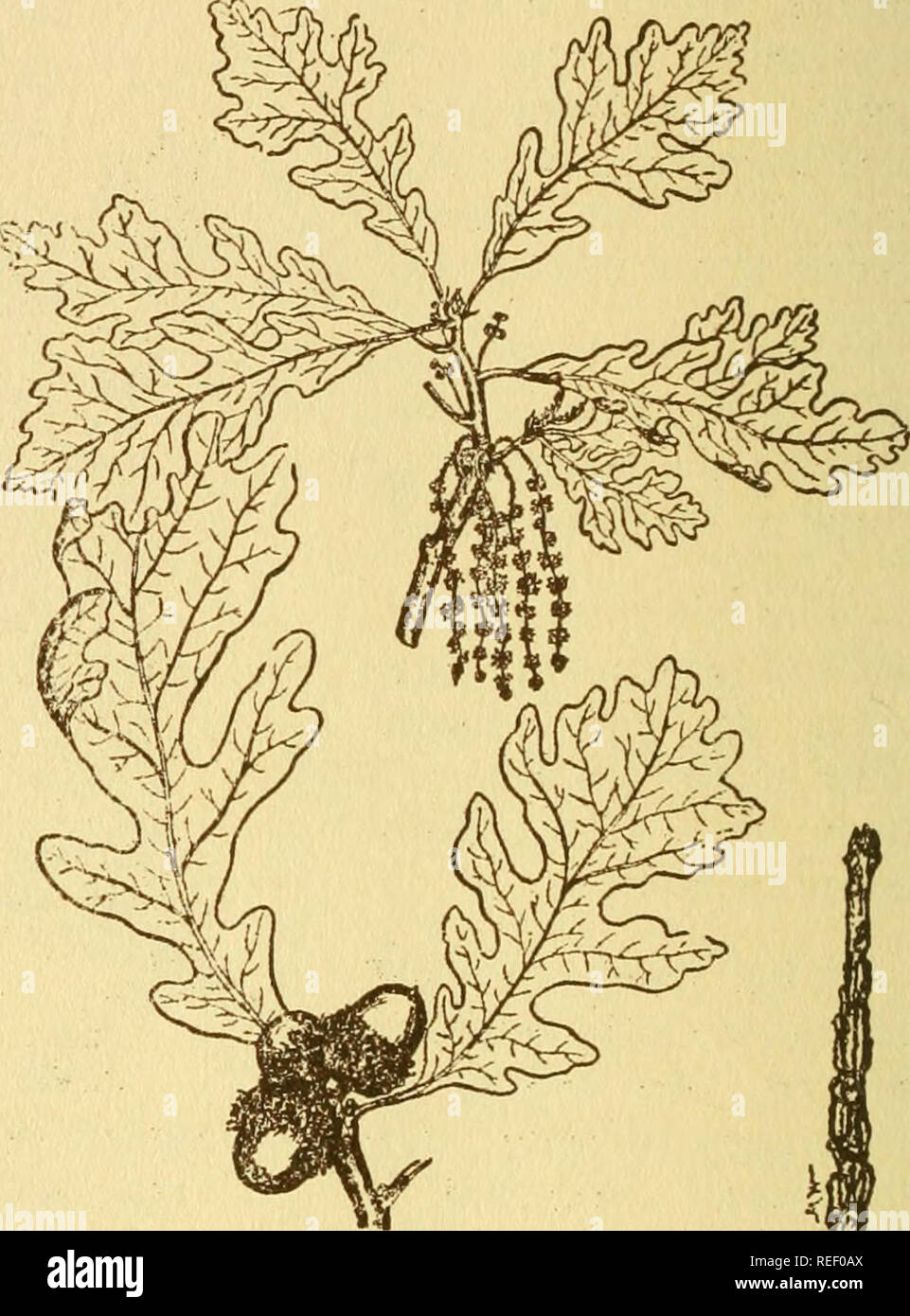. Common trees of New York. Trees; Trees. 68 Common Trees BUR OAK Quercus macrocarpa, Michaux THE BUR OAK, also called Mossy Cup Oak and Over Cup Oak, is one of the largest of American oaks. It reaches a height of 100 feet and 5 feet in diameter. The leaves are simple, alternate, 6 to 12 inches long, 3 to 6 inches wide, shiny and deep green above, pale and finely hairy beneath. Near the middle are deep clefts that almost divide the leaves into two parts. The flowers and wood are similar to those of White Oak. The fruit is a large acorn matur- ing in one season. The nuts are % of an inch long w

Image details
Contributor:
The Book Worm / Alamy Stock PhotoImage ID:
REF0AXFile size:
7.2 MB (356.5 KB Compressed download)Releases:
Model - no | Property - noDo I need a release?Dimensions:
1360 x 1838 px | 23 x 31.1 cm | 9.1 x 12.3 inches | 150dpiMore information:
This image is a public domain image, which means either that copyright has expired in the image or the copyright holder has waived their copyright. Alamy charges you a fee for access to the high resolution copy of the image.
This image could have imperfections as it’s either historical or reportage.
. Common trees of New York. Trees; Trees. 68 Common Trees BUR OAK Quercus macrocarpa, Michaux THE BUR OAK, also called Mossy Cup Oak and Over Cup Oak, is one of the largest of American oaks. It reaches a height of 100 feet and 5 feet in diameter. The leaves are simple, alternate, 6 to 12 inches long, 3 to 6 inches wide, shiny and deep green above, pale and finely hairy beneath. Near the middle are deep clefts that almost divide the leaves into two parts. The flowers and wood are similar to those of White Oak. The fruit is a large acorn matur- ing in one season. The nuts are % of an inch long with a white and sweet kernel. The cup covers about half of nut and is bor- dered by distinct fringe along mar- gin. The twigs are Stout, yellowish- brown and usually marked with corky winged projections. The buds are alternate, y% of an inch long, blunt-pointed, reddish-brown, clustered at end of twigs. The bark becomes deeply furrowed and has a tendency to peel off in flaky scales. The Bur Oak is found from New Brunswick and Nova Scotia west to Manitoba, and south to Pennsylvania, Kansas and Texas. In New York it is found across the State on rich soils south of the Adirondacks and northward to Lake Champlain and Jefferson county. Not reported south of Greene county in Hudson valley. The Bur Oak is a valuable timber tree and used exten- sively for ornamental planting. It is easy to transplant, grows rapidly, has few insect enemies.. BUR OAK One-third natural size.. Please note that these images are extracted from scanned page images that may have been digitally enhanced for readability - coloration and appearance of these illustrations may not perfectly resemble the original work.. Illick, Joseph S. (Joseph Simon), 1884-1967. Washington, D. C. , American Tree Association